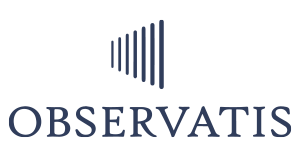Compensation Alignment Isn’t About Money—It’s About Meaning
Most organizations talk about compensation in spreadsheets and pay bands—but to your employees, it’s personal. It’s not just about fairness—it’s about feeling seen, valued, and aligned with purpose. In a tight labor market and retention crisis, compensation equity isn’t a perk—it’s a strategy.
Compensation should reflect contribution—not confusion.
Compensation misalignment is one of the biggest contributors to disengagement and silent turnover. When employees feel underpaid compared to peers or undervalued relative to their contributions, they don’t always complain—they quietly prepare to leave.
Let’s have a dialog
Observatis maps compensation data alongside employee satisfaction, job roles, department, tenure, and perceived fairness—generating a dynamic equity map. It allows leaders to:
– Detect pay gaps across functions and roles
– Benchmark compensation versus market and internal perception
– Tie compensation alignment to retention and engagement metrics
– Trigger alerts when equity perception drops below a set threshold
Why It Matters?
Employees who feel underpaid are twice as likely to leave within a year. But it’s not just about the dollar figure—it’s about transparency, fairness, and growth. Aligning pay with purpose boosts not only retention but also trust and performance.


Emerging Scientific Insights
– A study published in the NIH’s National Library of Medicine found that perceived pay equity strongly correlates with employee engagement and job satisfaction (source: NCBI).
– MIT Sloan research shows that companies with transparent compensation frameworks see 20% higher retention rates.
– A joint study by Payscale and Harvard Business Review found that employees who believe they are paid fairly are 50% more engaged—even when actual pay is slightly below market.
Pioneers lighting the path
– Salesforce publishes a yearly compensation equity audit and has closed 98% of their gender pay gap since 2016.
– Buffer, a tech company, made all salaries public to drive trust and equity—resulting in higher engagement scores and reduced churn.
– The State of California mandates pay transparency laws that have prompted large employers to adopt proactive pay alignment strategies.
Industry Signals from recent research
– NIH (2021): Psychological effects of perceived pay inequity result in 2.3x increase in stress-related absenteeism.
– WorldatWork (2023): 74% of organizations now include compensation fairness in their engagement strategy.
– McKinsey (2022): Companies that redesign their pay models around career paths see 28% lower attrition.
Your compensation alignment blueprint
– Audit perceived compensation equity—not just market alignment.
– Cross-reference pay bands with performance and promotion patterns.
– Open the conversation—how transparent is your current model?
– Implement equity dashboards to track gaps by gender, role, race, or geography.
– Use engagement data to trigger equity reviews—not just HR cycles.
– Map compensation alongside values and contribution—not just job title.
Is your compensation strategy building loyalty—or friction?
We help reveal where misalignment exists between pay, satisfaction, and purpose—and how to fix it.
If you’d like to see how compensation benchmarking can drive equity and retention, we’re here.
References & Credits
– National Library of Medicine
– MIT Sloan
– Payscale x HBR Study
– Salesforce Compensation Report
– McKinsey Workforce Insights





Anonymous
There’s so much noise around pay equity. It’s good to see a system that brings clarity, not just compliance.
Anonymous
Comp equity is such a tough conversation—but avoiding it is costlier.
Anonymous
We just completed a pay analysis and saw wild inconsistencies across roles. Curious to learn how Observatis flags this proactively.
Anonymous
Retention conversations almost always lead back to comp transparency. We need smarter tools.
Anonymous
I’d love to see how Observatis benchmarks comp alongside engagement and satisfaction—not just job title.
Anonymous
Can Observatis support localized benchmarking for hybrid workforces?
betao bet paga mesmo
Fala, apostadores! A Betão Bet paga mesmo direitinho? Já ouviram falar de alguém tendo problema com saque? Quero ter certeza antes de depositar! betao bet paga mesmo